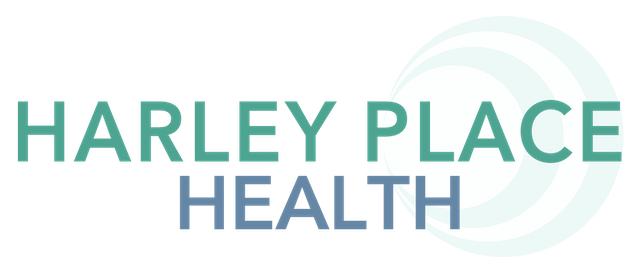Let’s start by discussing what osteopathy is and what the underlying principles it is governed
by.
What is Osteopathy?
Osteopathy is a way of manual (hands-on) treatment of the body to improve its capacity to
function. Osteopaths uses a variety of techniques, both “Active” and “Passive” techniques.
Active techniques are where the patient primarily does the intervention, such as exercise
rehabilitation. While passive techniques are where the osteopath primarily does the
intervention and the patient less so. These techniques include soft tissue massage, joint
mobilisation and manipulation.
What are the principles of Osteopathy?
There are 4 principles of osteopathy:
- The body is a unit:
Mind, body, and spirit are interconnected.
Physical health is influenced by mental and emotional well-being, and vice versa.
Osteopaths consider all aspects of a person, not just the site of pain, when diagnosing
and treating. - Structure and function are interrelated:
How the body is built (structure) affects how it works (function), and vice versa. For
example, restricted joint movement or poor posture can impair circulation, nerve
function, and overall mobility.
Osteopaths look for restrictions or imbalances in the body that may be affecting health
or performance. - The body has the capacity to self-regulate and have self-healing mechanisms:
The body has an innate ability to maintain health and recover from illness or injury.
Osteopathic treatment aims to support and enhance these natural processes rather than
override them. - Treatment should be based on the above three principles:
Osteopaths use their knowledge of anatomy, physiology, pathology, and
biomechanics to create individualised treatment plans.
The goal is not just symptom relief, but to restore function, support overall health, and
empower the patient.
What is Evidence Based Practice (EBP)?
Evidence based practice (EBP) is a systematic approach to decision-making that utilizes the
best available evidence, including research findings, clinical expertise, and patient values, to
guide practice. It involves integrating these elements to make informed decisions that lead to
improved outcomes.
- Best available research evidence:
This refers to clinically relevant research from studies with minimal bias, like
randomized controlled trials. - Clinical expertise:
This encompasses the knowledge, skills, and experience of the healthcare
professional. - Patient expectations and preference:
Acknowledging and incorporating the patient’s preferences and circumstances into
the decision-making process.
With the terms defined, here is what we know of osteopathy as an evidence-based approach
in treating patients.
When it comes to treating musculoskeletal dysfunctions like back pain and neck pain,
osteopathy does have research backed evidence to support it.
Back Pain
According to research published in BMJ Open and The Lancet, manual therapy including
spinal manipulation and mobilisation can be an effective part of a multi-modal approach for
managing back pain.
A 2020 systematic review showed that osteopathic manipulative treatment significantly
improved pain and disability in patients with chronic low back pain. When combined with
exercise and education, these treatments are especially beneficial.
Neck Pain
Neck pain, often caused by poor posture, stress, or prolonged sitting, responds well to manual
techniques like joint mobilisation, soft tissue massage, and muscle energy techniques, all
commonly used in osteopathy. Studies indicate short-term improvements in pain and range of
motion, especially when patients stay active and involved in their treatment.
It should be noted that in some of the research conducted on the benefits of different manual
therapy techniques, both active and passive techniques are not categorised specifically as
“osteopathy” only, “chiropractic” only or “physiotherapy” only techniques; meaning
provided with the correct training and expertise, any technique can be performed by any
practitioner within their scope of qualification.
While there is evidence for osteopathic treatment for back and neck pain (or at least active
and passive manual techniques), lets shift focus onto some other conditions that research does
not have a strong evidence in its effectiveness but anecdotal evidence through Clinical
Expertise have seen patients benefit.
Headaches and Migraine
Headaches and migraine are common presentations in the clinic. Some tension-type and
cervicogenic headaches are linked to musculoskeletal dysfunction in the neck and upper
back. Osteopaths may use gentle manual therapy to release tension in these areas, which can
reduce headache frequency and intensity. Migraine management through osteopathy still
lacks strong research evidence and should be approached cautiously, but this is where an
experienced osteopath can use their expertise to help using a variety of techniques.
Pregnancy
Pregnancy-related pain often comes with musculoskeletal discomfort. Think ligament laxity
through shifting hormonal changes, pelvic girdle pain, sciatica, and lower back tension.
Osteopathic treatment during pregnancy has been shown in small studies to improve
functional outcomes and reduce pain, potentially making pregnancy more comfortable
without medication. Anecdotally, patients may find these symptoms worsen during the
second and third trimester and passive techniques during this time has been very helpful in
easing discomfort.
Patient Preferences is the last pillar of EBP model. This is something an osteopath can find
out before the commencement of any treatment. A written and verbal consent should be given
and the osteopath must adhere to such requests. For example, if a patient has had some ill
effects from a manipulation from previous treatments or has fears after hearing from friends
or family who suffered poor outcomes after said technique, the osteopath must take this into
consideration to weigh up the risk versus reward of performing such technique. This is why
an osteopath with extended clinical experience and expertise in a variety of techniques is so
important.
Cranial and Visceral Osteopathy
A word on a less common and perhaps “old school” branch of osteopathy. Both cranial and
visceral osteopathy have much less scientific backing. While some practitioners and patients
swear by their effectiveness, large-scale and high-quality clinical trials haven’t consistently
shown strong evidence for these methods.
Cranial osteopathy, also known as craniosacral therapy, is a specialised area of osteopathy
that focuses on the delicate movements and structures of the skull and its surrounding tissues.
Osteopaths practicing cranial osteopathy use a highly developed sense of touch to identify
and address restrictions or imbalances in the cranial bones, meninges, and cerebrospinal fluid.
This approach aims to enhance the body’s self-healing mechanisms and improve overall well-
being.
Visceral osteopathy is a manual therapy technique within osteopathy that focuses on the
internal organs (viscera) and their relationship with the musculoskeletal system. It involves
gentle manipulations to improve organ mobility, release tension in fascial tissues, and address
potential restrictions that may contribute to various musculoskeletal or digestive issues.
Conclusion
Is osteopathy evidence based? In short, it depends…
While manual (active and passive) techniques such as joint mobilisation, soft tissue massage
and spinal manipulation along with exercise prescription and education have shown to be
beneficial, there is currently less evidence to support Cranial and Visceral branch of
osteopathy.
Ultimately, any form of treatment for best patient outcomes must be through the three pillars
of Evidence-Based Practice; the intersection of best available research evidence, clinical
expertise of the treating osteopath while considering patient expectations and preferences.
References
Licciardone, J. C., Kearns, C. M., Minotti, D. E., & Tatman, L. H. (2020).
Osteopathic manipulative treatment for chronic low back pain: A randomized controlled
trial.
Journal of the American Osteopathic Association, 120(8), 529–538.
https://doi.org/10.7556/jaoa.2020.088
Foster, N. E., Anema, J. R., Cherkin, D., Chou, R., Cohen, S. P., Gross, D. P., … & Maher, C.
G. (2018).
Prevention and treatment of low back pain: evidence, challenges, and promising directions.
The Lancet, 391(10137), 2368–2383. https://doi.org/10.1016/S0140-6736(18)30489-6
Franke, H., Franke, J. D., & Fryer, G. (2014).
Osteopathic manipulative treatment for nonspecific low back pain: A systematic review and
meta-analysis.
BMC Musculoskeletal Disorders, 15, 286. https://doi.org/10.1186/1471-2474-15-286
Miller, J., Gross, A., D’Sylva, J., Burnie, S. J., Goldsmith, C. H., Graham, N., … & Kay, T.
M. (2010).
Manual therapy and exercise for neck pain: A systematic review.
Manual Therapy, 15(4), 334–354. https://doi.org/10.1016/j.math.2010.03.008
Licciardone, J. C., Aryal, S., & Singh, K. P. (2010).
Osteopathic manipulative treatment for chronic low back pain: A randomized controlled
trial.
The Journal of the American Osteopathic Association, 110(10), 646–656.
Green, C., Martin, C. W., Bassett, K., & Kazanjian, A. (1999).
A systematic review of craniosacral therapy: Biological plausibility, assessment reliability
and clinical effectiveness.
Complementary Therapies in Medicine, 7(4), 201–207. https://doi.org/10.1016/S0965-
2299(99)80003-9
Guillaud, A., Darbois, N., Monvoisin, R., & Pinsault, N. (2018).
Effectiveness of visceral osteopathy: A systematic review of the literature.
European Journal of Osteopathic Research, 7, 1–10.
Written by Dr Marcus Ng (Osteopath) M. Osteo, B App Sc (Osteo Studies), B. Sc (Anat.)






